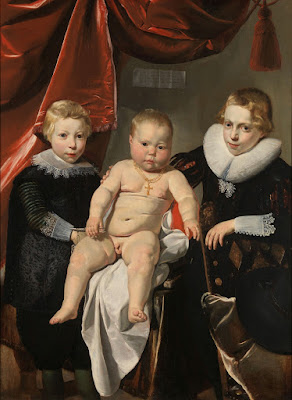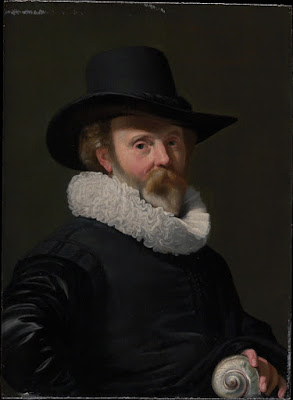 |
| Thomas de Keyser Portrait of Loef Vredericx as Standard Bearer 1626 oil on panel Mauritshuis, The Hague |
 |
| Thomas de Keyser Portrait of Three Brothers ca. 1627-32 oil on panel Rijksmuseum, Amsterdam |
 |
| Thomas de Keyser Portrait of Three Officials ca. 1625-30 oil on canvas Rijksmuseum, Amsterdam |
 |
| Thomas de Keyser Portrait of Three Children and a Man 1622 oil on canvas Rijksmuseum, Amsterdam |
 |
| Thomas de Keyser Syndics of the Amsterdam Goldsmiths Guild 1627 oil on canvas Toledo Museum of Art, Ohio |
 |
| Thomas de Keyser Officers and other Militiamen of District III in Amsterdam 1632 oil on canvas Rijksmuseum, Amsterdam |
 |
| Thomas de Keyser Portrait of a Musician and his Daughter 1629 oil on panel Metropolitan Museum of Art, New York |
 |
| Thomas de Keyser Portrait of Frederick van Velthuysen and his wife Josina 1636 oil on panel National Gallery of Victoria, Melbourne |
 |
| Thomas de Keyser Portrait of Frederick van Velthuysen and his son Diederik 1660 oil on panel private collection |
 |
| Thomas de Keyser Portrait of a young Silversmith 1630 oil on canvas private collection |
 |
| Thomas de Keyser Portrait of a Gentleman with a Greyhound 1624 oil on panel private collection |
 |
| Thomas de Keyser Portrait of a Lady 1632 oil on panel Gemäldegalerie, Berlin |
 |
| Thomas de Keyser Portrait of a Gentleman with a Shell ca. 1625-26 oil on panel Metropolitan Museum of Art, New York |
 |
| Thomas de Keyser Portrait of a Gentleman ca. 1626 oil on panel North Carolina Museum of Art, Raleigh |
 |
| Thomas de Keyser Equestrian Portrait of Pieter Schout 1660 oil on copper Rijksmuseum, Amsterdam |
"Thomas de Keyser (1596-1667) achieved his greatest prominence as a painter, and became the preeminent portraitist in Amsterdam's burgeoning merchant class, at least until the arrival of Rembrandt van Rijn in 1632. Nothing is known about his artistic training, but he has gained lasting renown for two significant innovations in Dutch portraiture. First, he began to paint the Dutch elite in full-length formal portraits, a format hitherto reserved for the aristocracy, but he drastically reduced the scale of such portraits to make them suitable for his patrons' urban homes. He also began to depict subjects in their personal or professional environments, thereby bridging the fields of portraiture and domestic genre scenes."
– from the biographical sketch at the National Gallery of Art, Washington DC